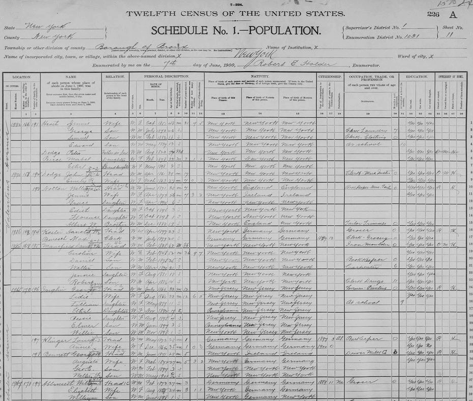While you’ll hear plenty of suggestions on how you should do a source citation, there is not a true wrong way or right way. Elizabeth Shown Mills says that, “citation is an art, not a science,” and she is correct. It comes down to adhering to the essential components of a citation, listed below. Once you have these down, you will be comfortable enough to cite just about any record you come across.
Essential elements of a good genealogy source citation
There are five key elements to a successful source citation. If you have these in your citation, you will be good to go with only a few exceptions. These elements are:
- Who created the information (author, editor, transcriber, etc.)
- What is the title of the source
- When the record was created or published
- Where in the record the information is located (volume, page, etc.)
- Where is the source physically located (archive, library, etc.)
Let’s break this down a bit and further define each component.
Who created the source?
“Who” specifically refers to the author or creator of the source. It may be a person(s) or it could be an organization. So, for example, if you’re citing a letter you found at home from your great-grandfather to your great-grandmother, then you’ll want to cite your great-grandfather as the “who.” If, however, you’re citing a book that contains the letter you’re referencing, the “who” in the source is the author or editor who compiled the information.
There are two reasons you wouldn’t list a “who.”
- If the author or creator is not on record. For example, you may not know the writer of a historic newspaper article, which typically did not list writer’s names.
- If it is the same entity that published the item and the “who” is also the title of the work.
What is the source?
The “What” is the title of the source. Remember to follow the rules of underlining or italicizing the title and use title case. However, if the item does not have a title, you’ll want to create a description for it. The description lets others know exactly what the material is. For example, “Letter written by John Doe to his wife Jane.” If you think the title doesn’t make it clear what type of a source it is, you can add descriptive words after it, such as database, transcript, image, etc.
When was it published?
“When” refers to the date the media was published. Use years for books. Months, quarters or seasons are added for journals and magazines. Use full dates for newspapers, downloads of online information and unpublished sources, if applicable. If the item is not dated, state that by using the letters ND for “no date.” However, if you can estimate a publication date then try to do so. Show the estimated date range or write “likely the 1880s.”
Where in the source citation?
“Where in” refers to the specific place in the source where the information is located. This is a page number, volume number, chapter title, etc. If the record is an unbound source or has no page numbers, you can identify the information on the page you are citing by describing it. For instance, “birth dates chronologically listed on loose page in file.”
Where is the source located?
“Where is” refers to the specific physical location of the source. Did you find it online, in a library, at an archive, or is it held privately? This can get very complicated, but just remember this tip: Work from small to large. Start with the collection name (the smallest where) and work your way up to the state or country (the largest where) listing all the information about the location of the source as you go.
Source Citation Example
This is a page from a 1900 US federal census found online. To create the source citation, I need to gather pertinent information from this page and the website I used.

For most census citations you will need the information listed at the top of the page and in the first few left-hand columns. This information includes: where the census was taken, the page you found the information on, where the family is located on the sheet, plus the numbers from the family, house and dwelling columns. You will also need the website name, URL address and the date you accessed this information. All of these pieces will go into your source citation.
Let’s walk through gathering the information:
- Who: U.S. Census
- When: the year taken (1900)
- What: The description and type of census (New York County, New York, population schedule, Borough of the Bronx, p. 11A (written), dwelling 170, family 198, George Bennett family)
- Where in: lists the original repository that the image is located in. (citing FHL microfilm: 1241126.)
- Where is: the location on the website, with the date accessed. (digital image, Ancestry.com (http://www.ancestry.com : accessed 8 Dec 2014))
From this breakdown you can create your source citation:
1900 U.S. Census, New York County, New York, population schedule, Borough of the Bronx, p. 11A (written), dwelling 170, family 198, George Bennett family; digital image, Ancestry.com (http://www.ancestry.com : accessed 8 Dec 2014); citing FHL microfilm: 1241126.

No comments:
Post a Comment